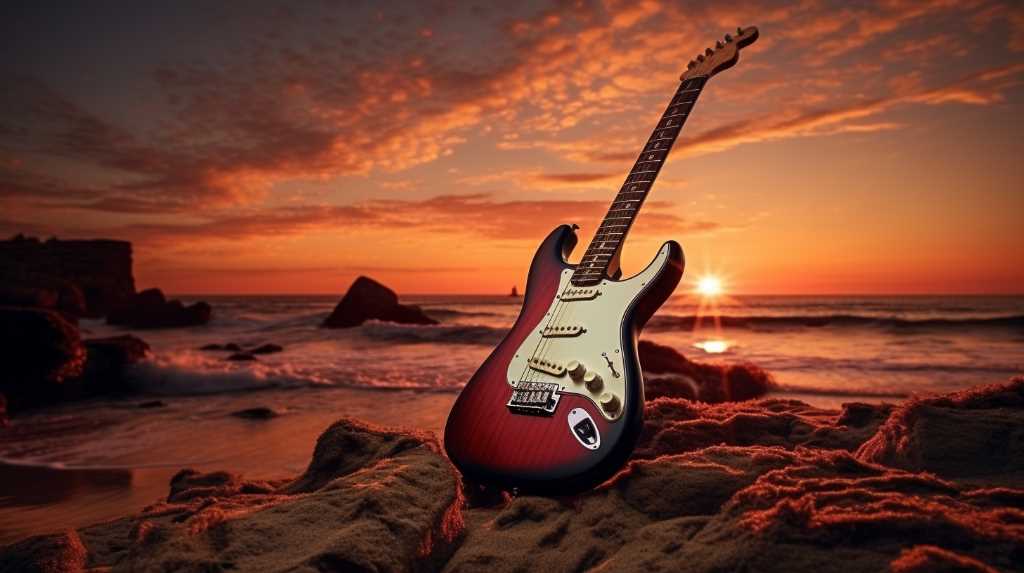
Dick Dale’s guitar playing has made a lasting mark on American music. Known as the ‘King of the Surf Guitar,’ he changed how the electric guitar was played, taking inspiration from the powerful ocean waves to shape the sound of surf rock. Dale’s music stands out because he used a lot of reverb, making his tunes echo as if they were played in a large cave. He was also very skilled at playing notes quickly through a technique called alternate picking; this became essential to the surf guitar sound.
Dale didn’t just stop there. He brought in musical scales from the Middle East and Eastern Europe, adding an unusual twist to his melodies that you wouldn’t typically hear in American rock music. He liked to use thick guitar strings and would turn his amplifiers up really high. This made his live shows incredibly impactful and helped him break new ground with the sounds he created.
By pushing the boundaries of what an electric guitar could do, Dick Dale’s influence can still be heard in music today. His techniques and the unique sound he created are a big reason why surf rock became popular and remain influential.
The Reverb Effect
Reverb played a key part in shaping the iconic guitar sound of Dick Dale, making it seem like he was playing in a large, echoing space. This added a special touch to the surf rock music he was famous for. By using electronic tools to enhance his sound, Dale captured the spirit of 1960s Southern California’s beach culture. He wasn’t just using reverb for the sake of it; he knew how to control it perfectly, making each song’s soundscape unique.
Reverb wasn’t just a fancy add-on in Dale’s music; it was crucial. He used it to bring out the intense feelings and energy in his live shows.
For example, when you listen to Dale’s hit ‘Miserlou,’ you can hear the reverb effect make the guitar notes echo, which gives you the feeling of being right there on the beach with the surfers.
If you’re looking to recreate that sound, you might want to try a guitar effects pedal like the Boss FRV-1 ’63 Fender Reverb, which is designed to mimic the reverb used by surf rock musicians in the ’60s.
Alternate Picking Mastery
Dick Dale was a master at alternate picking, a guitar technique that’s all about quickly alternating between downward and upward pick strokes. This skill was key to his surf rock sound—it let him play at high speeds, keeping up with the fast-paced, energetic music that makes surf rock so exciting.
Dale’s alternate picking didn’t just show off how fast he could play; it also added a powerful rhythm to his music, making the guitar almost sound like it was drumming. Even when he was playing super fast, you could still hear each note clearly, showing just how skilled he was.
When you watch Dale play, it’s clear that his ability to pick so precisely wasn’t just about speed. It was about expressing the raw energy of surf rock, and it’s one of the reasons this music still gets our hearts racing today.
Exotic Scales Integration
Dale brought something special to surf rock by adding Middle Eastern tunes, which made his guitar solos stand out. He often used a special scale called the double harmonic major scale, also known as the Byzantine scale. This scale has a unique sound because of its large jumps between notes, and it’s a big part of why the song ‘Misirlou’ sounds so magical and different.
Dale didn’t just use these scales on the surface; he really got into the details, using the ups and downs of the notes to create a feeling of suspense and surprise. His expert picking made sure every note was clear and full of the exotic sound he was going for. By doing this, he mixed different musical styles and changed the way people think about rock music.
For example, in ‘Misirlou,’ you can hear how Dale’s playing takes you on a journey that feels both new and strangely familiar. His music is a great example of how blending different cultures can lead to amazing new things. It’s like adding a new spice to a dish you thought you knew – it can completely change the experience.
Dale’s work shows that exploring new sounds and embracing different musical traditions can lead to groundbreaking results.
Heavy Strings Usage
Dick Dale, the famous surf rock guitarist, created his signature loud and lively sound by using thick guitar strings. These weren’t just for show; they were a key part of his unique music style.
Dale chose strings that were much heavier than what most guitarists would use. This let him play with more power and hold notes longer than he could with thinner strings. The tightness of these strings meant he had to play them harder, which made his music sound punchy and bold.
When we look at how Dale played, it’s clear that his energetic style and the way his guitar was set up worked together perfectly. It shows us that the kind of strings a guitarist chooses can really influence their music.
Amps and Volume Maximization
Dick Dale turned up his amps really loud to get his signature echoing sound. He chose Fender amps, like the Showman and Dual Showman, because they could handle his powerful strumming and the loud sound he loved without breaking down.
Dale worked with Leo Fender to create these strong amps that could produce a big, clear sound even at high volumes. This was important because Dale wanted his music to be loud and clear, and these amps had to keep up with his intense playing every night.
The Fender amps Dale used were built tough, not just because he liked the brand, but because they met his needs for his high-energy shows.
